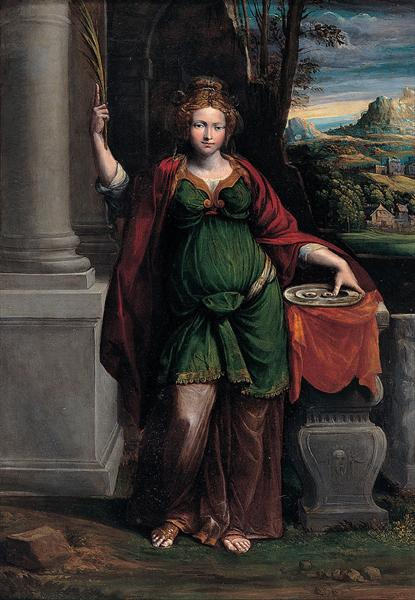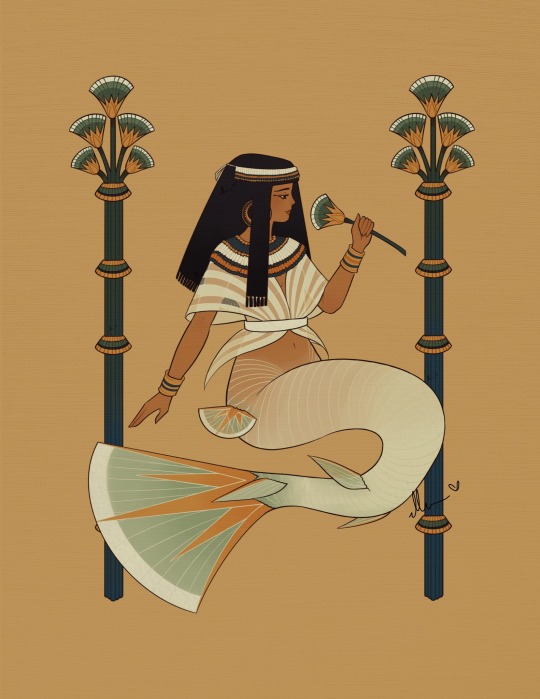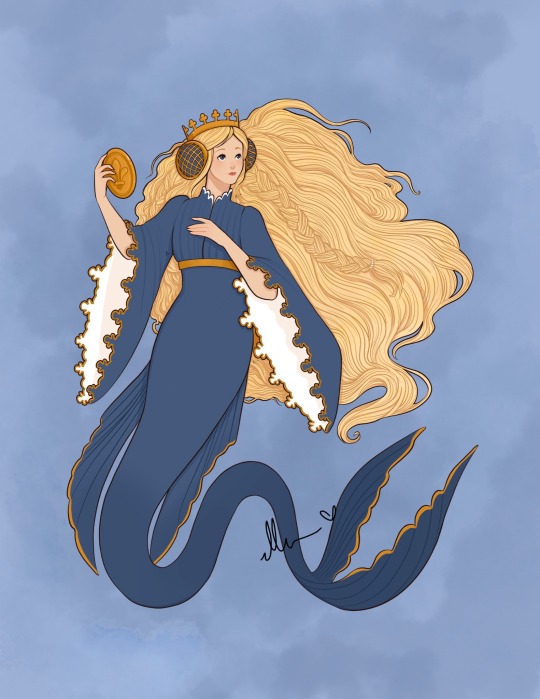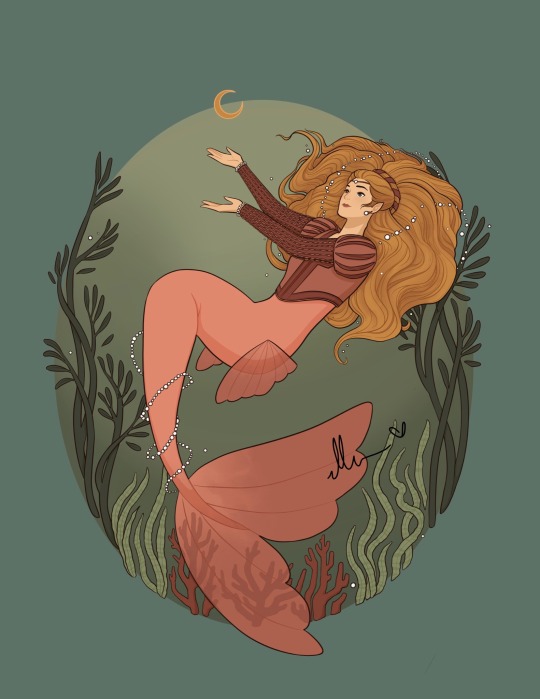#late Renaissance
Explore tagged Tumblr posts
Text

Salvator Mundi (Christ Blessing), Titian, ca. 1570
#art#art history#Titian#Tiziano Vecellio#religious art#Christian art#Christianity#Catholicism#Salvator Mundi#Renaissance#Renaissance art#Italian Renaissance#Late Renaissance#Cinquecento#Venetian School#Italian art#16th century art#oil on canvas#Hermitage#Hermitage Museum
314 notes
·
View notes
Text










*** A 16th century fashion book ***
From Medieval Advisor on Facebook
1508-1564 - BSB Cgm 1950 - the Hofkleiderbuch (court fashion book) of dukes Wilhelm IV. and Albrecht V
[New upload]
One of the great fashion textbooks of the 16th century: a time-lapse view of fashion evolution from 1508 to 1564.
There are very interesting views of armour. See the different options for gloves to wear with plate gauntlets. In two cases they have mail on the palm!!
There is an arquebus on a man dressed for hunting in 1536, and a few pistols (!) from 1553 onwards. (never imagined pistols will ever make it to this page...)
Support this research on Patreon and get access to over 220 exclusive posts! https://www.patreon.com/c/Medieval_Advisor
#medieval studies#medieval advisor#northern renaissance#late renaissance#holy roman empire#meanwhile in germany#1500s#fashion history#look book#steal his look
21 notes
·
View notes
Text
youtube
Giovanni Pierluigi da Palestrina (1525–1594) - Sabbato Sancto ·
Pro Cantione Antiqua · Bruno Turner
7 notes
·
View notes
Text

Caravaggio (1571-1610)
Madonna and Child with Saint Anne
#caravaggio#madonna and child with saint anne#art history#historical art#classical art#art details#art#the virgin mary#virgin mary#mary#madonna#jesus christ#jesus#saint anne#st anne#religious art#religious imagery#religious iconography#renaissance#late renaissance#borghese gallery#galleria borghese#rome#rome italy#italy#italian art#roman art#michelangelo caravaggio#koree
9 notes
·
View notes
Text

Gabrielle d'Estrées et une de ses soeurs or Gabrielle d'Estrées and One of Her Sisters (c. 1594) by an unknown painter from the School of Fontainbleau (c. 1530 – c. 1610), oil on wood (oak), 96 x 125 cm, Musée du Louvre, Paris
#gabrielle d'estrées et une de ses soeurs#gabrielle d'estrées and one of her sisters#portrait présumé de gabrielle d'estrées et de sa soeur la duchesse de villars#presumed portrait of gabrielle d'estrees and her sister the duchess of villars#painting#my upload#musée du louvre#louvre#paris#school of fontainbleau#école de fontainebleau#unknown artist#anonymous#oil on wood#oak#masterpiece#gabrielle d'estrées#mistress of king henry iv of france#royal mistress#16th century#late renaissance#renaissance#mannerism#northern mannerism#fertility#symbolism#art#fine art
14 notes
·
View notes
Text

Benvenuto Tisi (1491-1559) "Saint Lucy" (1535) Mannerism
#paintings#art#artwork#religious painting#female portrait#benvenuto tisi#fine art#mannerism#mannerist#italian artist#late renaissance#portrait of a woman#christianity#green#red#eyes#1530s#early 1500s#early 16th century#martyr
69 notes
·
View notes
Photo

Giovanni Battista Moroni, The Sculptor Alessandro Vittoria, ca. 1552/53, oil on canvas, 87.5 x 70 cm, Kunsthistorisches Museum, Vienna
Source: Wikimedia Commons
#art#painting#giovanni battista moroni#giovan battista moroni#giambattista moroni#portrait#artist portrait#artist's portrait#alessandro vittoria#sculptor#renaissance portrait#16th century portrait#16th century#16th century painting#16th century art#16th century menswear#renaissance#late renaissance#italian renaissance#renaissance clothing#renaissance art#renaissance painting#young man#artists in art#1550s
43 notes
·
View notes
Text
"Miserere mei, Deus” by Gregorio Allegri
Gregorio Allegri (c. 1582-1652) was a late Renaissance composer, best remembered for his ‘Miserere’ for two choirs. Allegri began singing in San Luigi dei Francesi before joining the Sistine Choir in 1629. Renaissance music was built upon plainchants, and is characterised by polyphony, imitation, motets, superimpositions, and overlapping cadences that convey flow, expressiveness, and devotion. ‘Miserere’ exemplifies Renaissance polyphony—one choir of five voices sings a fauxbourdon of a plainchant for the Tonus peregrinus, while the other choir of four voices supplies with elaborations and cadenzas, forming a 9-part polyphony.
youtube
Sistine Codex of 1661
‘Miserere’ is an acapella performed exclusively during Holy Week in the Sistine Chapel for ages. The church forbade it from being transcribed, so while the original 1661 codex might not reflect the true composition, it reveals the secret ornamentation practice of the olden Sistine Chapel Choir.
The Sistine Chapel Choir is a permanent choir in the chapel that never sings with instrument accompaniments. In this historical recording, a group of voices sings the plainchant, and then a second group of voices responds with elaboration. This repeats four times, as Allegri intended. The two choirs are distinct—even without video, one could picture that the second choir is singing far away at another end of a massive room. While I appreciated the contrast as it dynamised the plainchant, the upper voices in the second choir had drowned out the lower voices, resulting in an “airiness”. Nonetheless, the voices were well-blended and captured the essence of Renaissance music—the melodies flowed smoothly with no fixed tempo, and the music was expressive, whereby the soft tenor solos sounded pleading, but the choir in tutti sounded haunting. ‘Miserere’ means "Have mercy on me, O God" in Latin; fittingly, the acoustics of the chapel allowed their voices to echo, amplifying their devotion to God.
youtube
King’s College Choir 1963
The world-famous Choir of King’s College, Cambridge sings in the King’s College Chapel. This is one of the first modern recordings, conducted by David Willcocks and featured soloist Roy Goodman. It differs vastly from the original—during the 19th century, ‘Miserere’ was incorrectly transcribed, transposing the solo choir up a fourth.
Although sung in English, this version still preserved the smooth melodies and distribution of rubato in the original 1661 codex. However, it is more textured, dynamic, and exciting. The articulation of words is clearer; the tenors used a higher vocal placement to produce a more lightweight sound; the basses were audibly growing louder and softer, shaping a slow push-and-pull melody; the boy sopranos pierced through with their resonance and agility in the ornamented lines. Nevertheless, the pièce de resistance is boy treble Goodman’s breath-taking high notes during the second half of the four-voice falsobordone. Though his entry was a little shaky, the transition to the “top C” note was slick and precise, with a slight crescendo and close-to-none sliding. It is astonishing how Goodman sustained those notes—four times—without sounding strained; his pure and aethereal voice quality cannot be replicated by a female soprano. The high notes are my favourite part in contemporary ‘Miserere’, and I have yet to hear one as moving as Goodman
youtube
Ofra Harnoy
Ofra Harnoy is a widely celebrated classical cellist with over 40 solo albums. This recording is part of her ‘Back to Bach’ album, filled with Baroque favourites. Harnoy’s vision was to design a large cello ensemble by herself. To attain that effect, she harnessed the power of technology to overdub and produce multi-tracks.
I thought Harnoy’s work was innovative—the mixing and mastering were done so well that with eyes closed, her arrangement did seem like a grand cello ensemble. The tempo was a bit slower than the original 1661 codex and King’s College Choir 1963 recording, but that allowed the strings to ring longer, hence extending the crescendos and decrescendos. Additionally, the lower parts are more discernible than in the previous recordings. The rich bass and use of vibrato dramatised the music, creating a hauntingly beautiful and poignant experience. The high notes did not overpower, unlike in the King’s College Choir 1963 version, hence highlighting the polyphony.
One might think that Harnoy made her cello sing, but I felt that she transformed ‘Miserere’ into a cello piece. My only critique is that all the verses should have been recorded, to demonstrate how each verse differs in the embellishments—for example, the appoggiaturas sung by the higher sections.
youtube
Montechait
Montechait is a YouTuber who does piano cover videos and arrangements. He played on a Studiologic SL88 Studio keyboard, then produced and edited the audio using Pianoteq and Cubase software.
The pitches were not the most precise in the original 1661 codex and King’s College 1963 recordings. Hence, the pitch-perfect keyboard demonstrated how the melodies could sit with one another to deliver chords that assert gloom. I enjoyed that the ending verse was in forte, emphasising the volume of a 9-part polyphony. But this performance lacked expressiveness, which is quintessential to Renaissance music. Despite Pianoteq being one of the greatest virtual instruments that simulate the playability of an acoustic instrument, the recording had a largely manufactured sound. Furthermore, the piano is limited in the expressive shaping of notes as it does not offer dynamic nuance or vibrato.
I learnt that every performer has a unique story to tell in ‘Miserere’—whether it is of worship by the Sistine Codex of 1661, of tradition by the King’s College Choir, of beauty by Ofra Harnoy’s soul-stirring cello, or melancholy by Montechait’s solemn keyboard. In my opinion, the key change from G minor to C minor—due to scribal error—echoes the famous saying: “There are no mistakes, just happy accidents.” ~Bob Ross.
#music appreciation#critique#critic#school assignment#essay#student#Miserere mei deus#Gregorio Allegri#late renaissance#choir#song#church#choral#Sistine Codex of 1661#King’s College Choir 1963#Ofra Harnoy#Montechait#classical music#youtube#music#singapore#Youtube#roy goodman
3 notes
·
View notes
Text
youtube
#late entry#late romanticism#late roman republic#late renaissance#late registration#late reply#Youtube
0 notes
Text

Christ Washing the Disciples' Feet, Benvenuto Tisi, ca. 1520-1525
#Maundy Thursday#Holy Week#liturgical calendar#art#art history#Benvenuto Tisi#religious art#Biblical art#Christian art#Christianity#Catholicism#New Testament#Gospels#Renaissance#Renaissance art#Italian Renaissance#Late Renaissance#Mannerism#Italian Mannerism#Cinquecento#Italian art#16th century art#oil on panel#National Gallery of Art
127 notes
·
View notes
Text





Color-coded arrows.
Arrows marked with specific "barcodes". Probably to establish ownership and figure out who hit what.
San Sebastian by Bartolomeo Maineri, 1492
10 notes
·
View notes
Text
youtube
Jan Pieterszoon Sweelinck (1562–1621) - Paduana Lachrymae, SwWV 328 ·
Alina Rotaru, harpsichord
7 notes
·
View notes
Text
I was half asleep and thinking about all the stories like She’s The Man and Mulan (1999) where a woman dresses up like a man in order to do something ManlyTM and how they all inevitably fall in love with the masculinity of it all while still being women (or not, I guess, fiction is flexible and gender is more so)
and I went “give me a man who chooses to dress as a woman instead of resorting to violence. Give me a man who, in finding femininity and softness, can find himself. Give me a man who chooses kindness and love over war and aggression, but the only way he can do so is finding solace in the feminine. Not because femininity is inherently softer, but because society has told him as such. Give me a man who, through trial and error, finds himself learning to love the traditional women’s tasks he’s been clumsily attempting. Give me a man who could never truly fit in with other men, and the women around him protect him and love him unconditionally. Give me a man who cannot stand for himself at first, and then rises stronger together with the people who took him in”
And I realized that “give me a man who dresses as a woman in order to avoid going to war” is just. Achilles. And I want that classically animated movie now. I don’t even care if it’s sanitized like the Disney Renaissance Mulan or Hercules, in fact I’d enjoy that. I want Achilles to choose kindness and love and beauty over the war he never wanted to fight. I want a lighthearted, playful version of Achilles where there’s a happy ending. I know it’s a tragedy, but so were a lot of things that got animated at the time (not even Disney, Anastasia and Quest for Camelot come to mind as well) and I think he and Patroclus can have a happily ever after, too
I also want it to be gay, but I think that goes without saying
#patroclus#achilles#greek myth#greek mythology#animation#disney renaissance#late 1990s animation#happy stories#feminine men#she’s the man#mulan#feminine#femininity#masculine#masculinity#give me uwu soft boi that I can blorbo
4K notes
·
View notes
Text
There's something about seventies horror that reminds me of live theatre, actually. The sets and costumes are often cheap, and when it comes to period pieces, more 'inspired by' than accurate; the makeup is big and visible; even when the effects are really good, the blood is usually unnaturally red. The acting tends toward the broad and stagey.
And yet, it's also clear that realism is not the goal. Rather, the movie works to draw you in to a unified fiction, to get you to share in its nightmare. The best seventies horror I've seen has a dreamlike, Vaseline-lensed quality, a sense that it doesn't matter whether or not everything that happens in the movie is likely or even possible in real life. We've stepped outside of real life into a self-contained bubble with its own logic and its own sense, a dark fairy tale where the corpses of young girls might transmute into hares or eternally hungry floating heads, or the night of All Hallows might summon a stalking, unkillable masked evil from the past, or a ballet studio might be entirely controlled by witches. Even the lowest-budget, most exploitative Hammer flicks don't escape the touch of that dreaminess, that velvety, enfolding unreality. The movie suggests a world, and we, if we are wise, gladly succumb to the power of that suggestion.
#i mean like you could argue that this is the ultimate goal of every work of fiction#but horror in particular became obsessed with realism - and especially realistic effects - in the late aughts and 10s#and I feel like is only recently undergoing a renaissance of stylistic...uh...style
689 notes
·
View notes
Text








All the Historical Mermay’s together!
I had a lot of fun with this mermay prompt list by chloe.z.arts and they turned into a pretty cool collection of illustrations!
Prompt list by chloe.z.arts on instagram.
I am the artist! Do not post without permission & credit! Thank you! Come visit me over on: instagram.com/ellenartistic or tiktok: @ellenartistic
#historical mermay#mermay 2023#collection of mermaids#lnart#ellenart#historically inspired#historical fashion#it’s gonna be mermay#ancient egypt#ancient greece#tang dynasty#french medieval#italian renaissance#mughal empire#edo period#late victorian era
4K notes
·
View notes
Photo

Workshop of Alessandro Allori, Portrait of a Lady in a rust dress with a small dog, 16th/early 17th century, oil on panel, 89.2 x 65.5 cm, sold at Christie’s for GBP 30,000 in 2013
Source: Wikimedia Commons | Christie’s
#art#painting#alessandro allori#workshop painting#portrait#portrait of a lady#renaissance#late renaissance#mannerism#oil on panel#16th century fashion#16th century art#16th century painting#16th century#historical fashion#renaissance fashion
18 notes
·
View notes